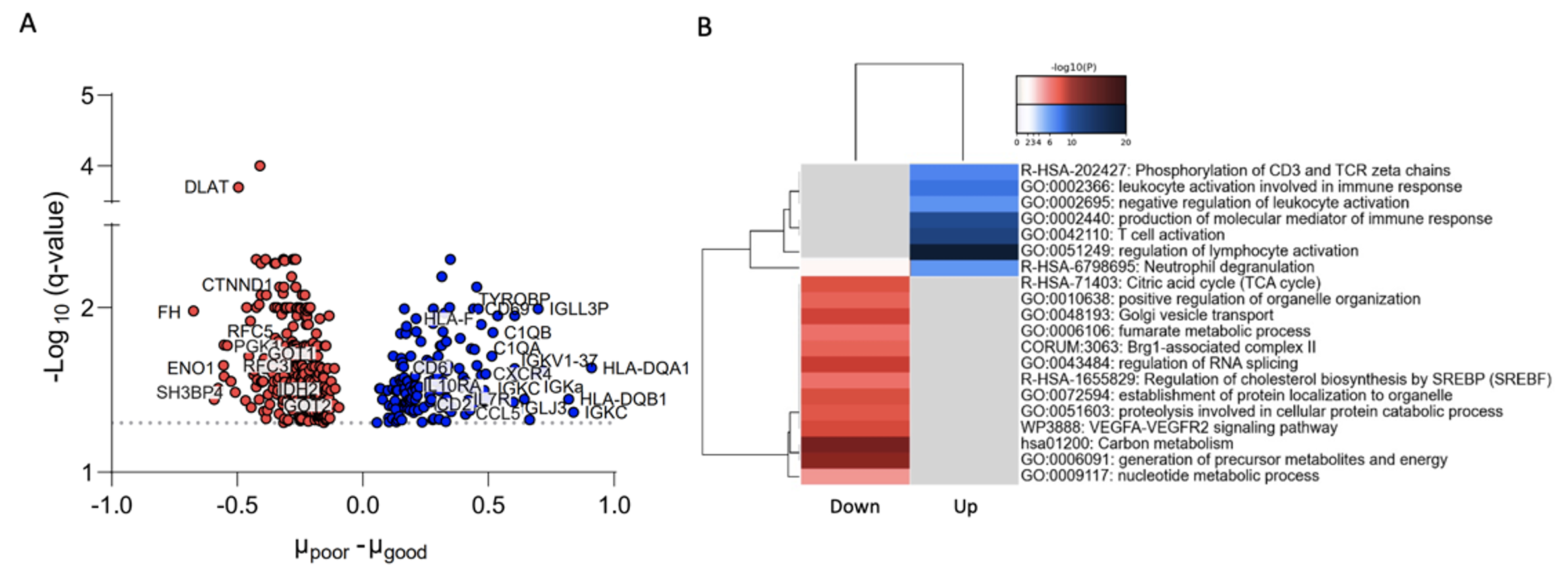Kidney Grafts with Poor 24-Month Function Present Upregulated Immune Activity at Pre-Transplantation
1University of Maryland, Baltimore, MD, 2Ohio State University, Columbus, OH, 3Montefiore Medical Center, Bronx, NY, 4University Hospital Zürich, Zürich, Switzerland
Meeting: 2022 American Transplant Congress
Abstract number: 463
Keywords: Gene expression, Graft function, Kidney, Lymphocyte activation
Topic: Basic Science » Basic Clinical Science » 17 - Biomarkers: Clinical Outcomes
Session Information
Session Name: Biomarkers: Clinical Outcomes I
Session Type: Rapid Fire Oral Abstract
Date: Tuesday, June 7, 2022
Session Time: 3:30pm-5:00pm
 Presentation Time: 3:30pm-3:40pm
Presentation Time: 3:30pm-3:40pm
Location: Hynes Veterans Auditorium
*Purpose: A transcriptomic profile serves as a snapshot of the temporary cell state and thus, analyzing pretransplant kidney biopsies can provide detailed information on the early biological processes associated with posttransplant outcomes.
*Methods: A total of 168 deceased donor pretransplant kidney biopsies were collected and recipients were monitored for at least 24 months. Gene expression measurements were performed using Affymetrix GeneChip microarrays (HG-U133A 2.0). Patients were classified as low vs. high function at 24-months, with the low functioning group having an eGFR <45 mL/min/1.73m2 (avg slope = -6.50 ml/min/1.73m2/year) and the high functioning group ≥45 mL/min/1.73m2 (avg slope= 0.81 ml/min/1.73m2/year). To identify differentially expressed genes (DEGs) associated with 24-month graft function, probe set level linear models were fit with high vs. low eGFR group assignments as the predictor variable adjusting for the surrogate variables.
*Results: Nearly 400 DEGs were found to be associated with 24-month outcomes (FDR<0.05) (Fig. 1A). Grafts with eventual low 24-month function exhibited activated innate (e.g., ADAM8, HLA-F, CCL5, TYROBP, PYCARD, CLEC7A) and adaptive (e.g., C1QA, C1QB, CD3D, CD6, CD48, GPR183, NCKAP1L, HLA-DQA1, IL7R) immune responses. In contrast, downregulated genes such as DLAT, ENO1, FH, GOT1, IDH2, PDS5A, and PGK1 are involved in metabolic processes (carbon/glucose metabolism, biosynthesis) and vesicle transport (Table 1). Upregulated biological processes in low-functioning grafts included T cell activation, leukocyte activation, and neutrophil degranulation (Fig 1B), as well as B cell proliferation, positive regulation of phagocytes, and dendritic cell migration.
*Conclusions: This is the first large cohort study to demonstrate that the pretransplant kidney transcriptome captures donor immune activation pathways related to 24-month function. This early immune burden may be the starting point for the development of chronic injury, a concept extending beyond kidneys and transplantation.
| Biological Pathway | Direction | Log10 P-value |
| Lymphocyte activation | up | -25 |
| Positive regulation of leukocyte activation | up | -23 |
| Adaptive immune response | up | -22 |
| Phagocytosis | up | -17 |
| Carbon metabolism | down | -11 |
| Glycolysis and gluconeogenesis | down | -9.4 |
| Golgi vesicle transport | down | -8.2 |
To cite this abstract in AMA style:
Bardhi E, Archer K, Maluf D, McDaniels J, Rousselle T, Akalin E, Mueller T, Mas V. Kidney Grafts with Poor 24-Month Function Present Upregulated Immune Activity at Pre-Transplantation [abstract]. Am J Transplant. 2022; 22 (suppl 3). https://atcmeetingabstracts.com/abstract/kidney-grafts-with-poor-24-month-function-present-upregulated-immune-activity-at-pre-transplantation/. Accessed December 18, 2025.« Back to 2022 American Transplant Congress

